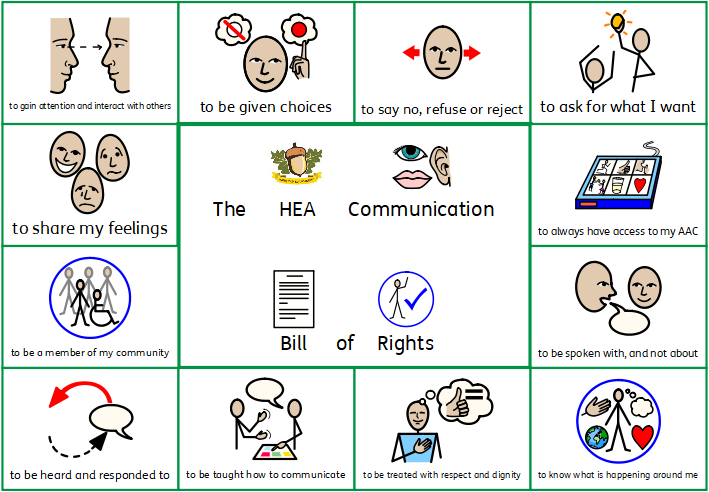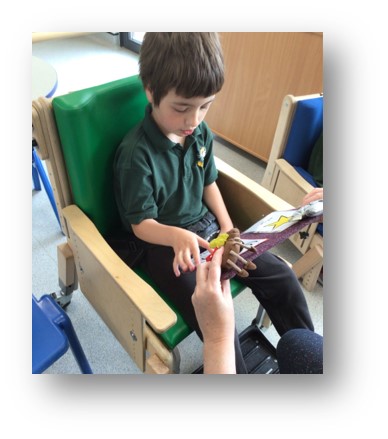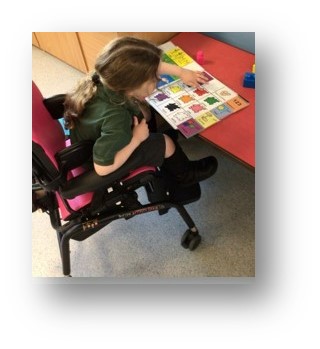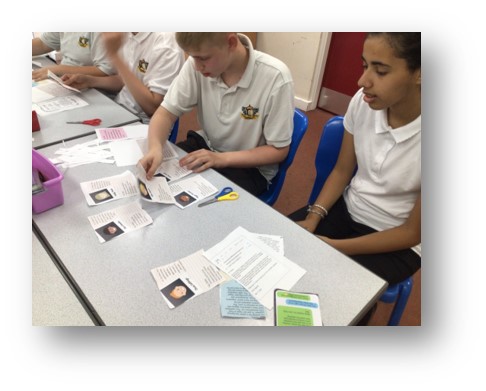Overview
We strive to achieve the best outcomes for ALL of our pupils, whatever their starting point. With this in mind, we aim to give our pupils the skills, confidence and knowledge to live as independently as possible and to communicate in the most effective way they can.
Communication is fundamental to everything we do. We have a high focus on communication across the school because the need to be able to communicate to others, and understand what they are communicating to us is integral to all aspects of our students' lives. Most learners have a communication target on their EHCP to reflect this.
Communication underpins learning in all subject areas. Students need to understand what is being communicated to them before they can learn through what is being said or shown. Equally, they need to be able to communicate about their learning to show what they can do, in order for us to be able to assess that learning.
We deliver a comprehensive communication provision which is personalised and thorough. This involves many different practices and interventions; it is vital that the communication needs of each learner are considered and the best approach taken. Communication learning is taught through specific timetabled lessons and through other subject areas as well as individual interventions.
There is more to communication than simply requesting and receiving. No matter your starting point, you should experience communication in its fullest form, emotionally, socially and functionally.
Communication can be closely linked to how students behave. When a student can’t communicate their wants, needs or feelings they express it in a different way - often leading to challenging behavior. When we put in place a communication system and enable them to communicate their frustration eases, wellbeing increases and behavior becomes more appropriate. This in turn aids their ability to develop further their communication skills, including being able to use appropriate language and eventually aids their choices into adulthood - accessing FE or employability. We aim for our students to leave us being the most effective communicators they can be, each in their own way.
Our Bill of Rights

Communication Across the Pathways

Learners in the Blue Pathway are developing non-verbal communication skills and early verbal skills including:
- Eye contact
- Gesture
- Facial expression
- Breathing changes
- Body language
- Reacting to sounds, speech and objects
- Making spontaneous sounds in reaction
- Making sounds to attract attention
- Developing word-like sounds and babbles
- Developing single words and phrases
- Responding to single words and phrases
Learners are working towards being able to communicate their wants and needs. Their skills in understanding familiar objects and activities and communicating choices are emerging. We facilitate the emergence and development of these skills through a total communication approach, including: intensive interaction, "Eye gaze", Makaton signing, Tassels on-body signing, Hand under hand signing, objects of reference, subject cues, photos and symbols.

Green Pathway learners are developing their own unique way of communicating. They may use speech, Makaton signing, symbols, PECS books, communication books, core communication boards or grid communication on ipad and zones of communication to communicate. Often, they use a combination of these strategies.
Students are developing skills in using single words and phrases in speech, understanding them and then moving on to using whole sentences. Within this they may be working on speech sounds and widening their vocabulary both in terms of speaking and understanding. Students in this Pathway are also developing listening skills - being able to follow single word instructions and moving on to following more complex instructions. They are developing the ability to ask simple questions and respond to closed or simple questions, and then responding to ones that are more complex.
In the Yellow Pathway, students are learning to communicate more effectively by broadening their vocabulary and confidence in using language in different situations. This will include:
- Communicating with peers to work together as a team

- Using effective communication to complete a task
- Broadening their vocabulary and understanding through different lessons
- Working on speech sounds and pronunciation with new vocabulary
- Using communication to participate in a game
- Communicating with peers in a leisure situation
Students are also developing their conversational skills in this Pathway, including questioning and answering, speech sound development, following multi-step instructions, using zones of regulation, communication for life skills and identifying how best to communicate in a range of different situations.
In the Yellow Pathway most students use speech but some use other communication aids to facilitate their learning. These include communication boards and core boards, Makaton, high tech AAC and braille.
Impact
We see the impact of our Communication curriculum each and every day. This may be through our own interactions with learners, observing them communicating more confidently with adults and peers or in the positive behavioural changes that we notice in school and that are equally reported from home. Our learners are able to make friends, share experiences, their wants, needs and opinions on things that matter to them. They are able to access social situations, further education and employment.

.JPG)
.JPG)
